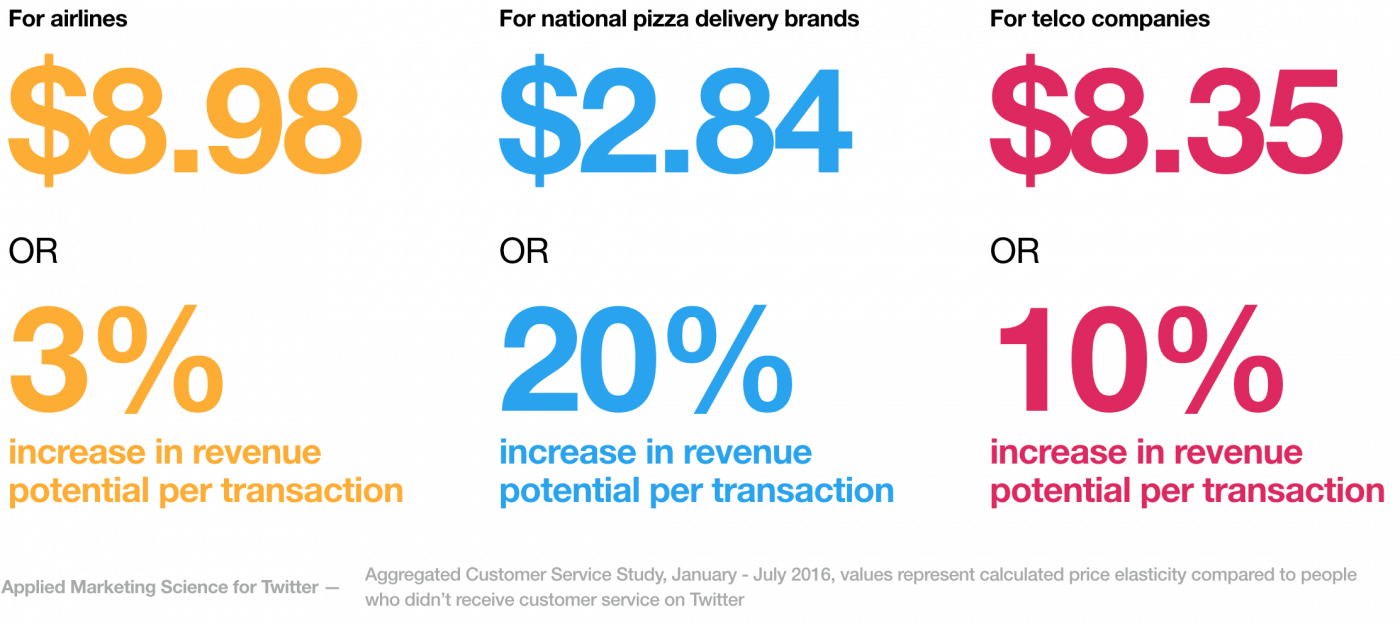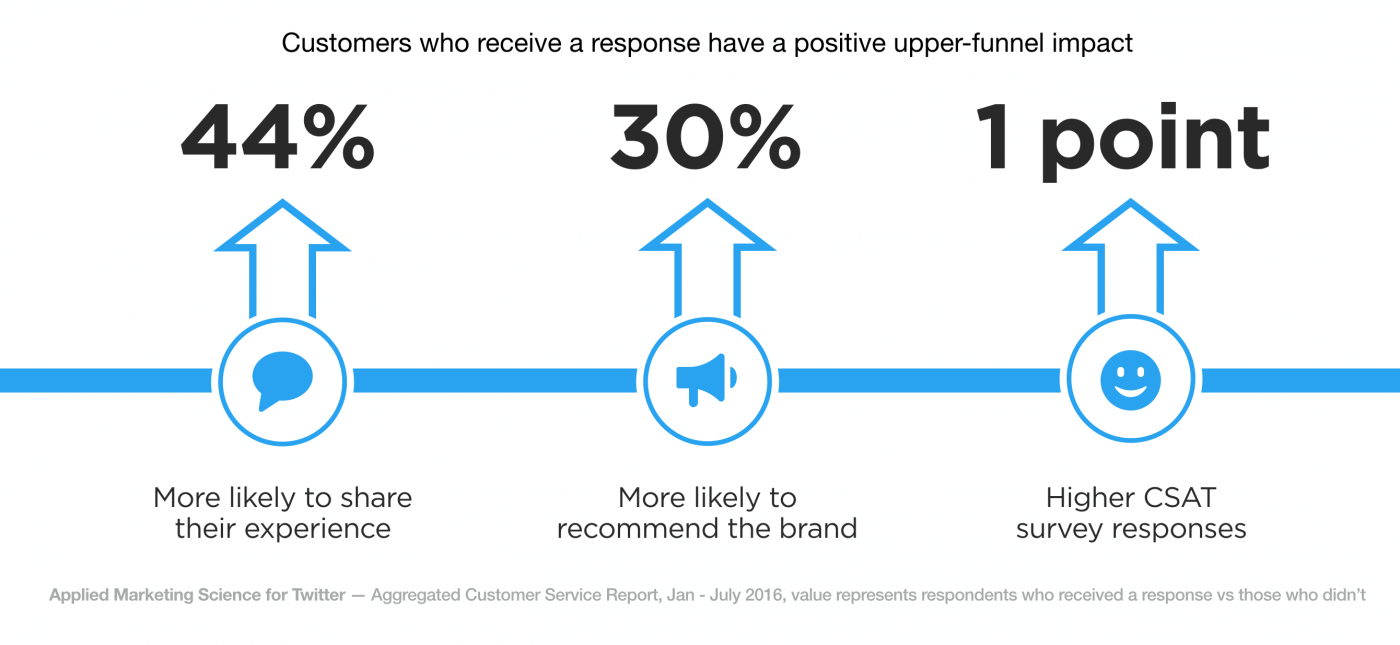Twitter has once again proven that customer service is the new marketing.
Following up on last year’s groundbreaking study which revealed that customers are willing spend more with airlines that respond to service inquiries on Twitter, the social media giant has expanded its research to two more industries – with even better results.
According to the new study, customers are willing to spend up to 20% more on an average priced item from a business that has responded to a customer service tweet, while responding faster increases the potential for increased revenue.
Twitter looked at national pizza delivery brands and telco companies, using the same analysis methodology as in the airline study. For pizza brands, customers were willing to spend $2.84 more (20%) after receiving a response from a brand on Twitter, while for telco companies it was $8.35 or 10%.

Importantly, speed also matters. Measuring the “price elasticity between groups” – or the difference in revenue potential between a quick response and a slow response – Twitter found that while customers have varying expectations of exact speed across industries, faster is always significantly better. In addition, higher-priced items actually have greater incremental revenue potential.
For airlines, a 6-minute-or-less response time resulted in incremental revenue potential of nearly $20, which was 8 times the revenue potential of a response time of 67 minutes or more (just $2.33). Similarly, telcos saw a 4.9x increase in revenue potential, but with a much narrower time difference ($17.18 for less than 4 minutes vs. $3.52 for greater than 21 minutes). Pizza restaurants had the smallest delta, just 1.4x, and customers appeared to be more understanding of longer response times.

The study – which included customers who used traditional customer service channels as well as those who did not have any customer service interaction at all – also found that responding to customer service Tweets “increases word of mouth activity, likeliness to recommend, and customer satisfaction.”
“Customers are 44% more likely to share their experiences – both online as well as offline – after receiving a response from a business on Twitter. Further, they are 30% more likely to recommend the business, and respond an entire point higher (2.66 vs 3.66) on customer satisfaction surveys.”

The customer satisfaction results gel with last year’s airline study, which found that customers who received a response via Twitter rated their satisfaction higher (3.72 on a 5-point scale) than those who received no response (2.68) and those who received service via traditional channels like telephone (3.38).
While many companies remain hesitant to engage with complaints on social media, Twitter’s research confirmed that 69% of complainers feel more favorable toward a business when it responds on Twitter. Author Jay Baer found similar results in his “Hug Your Haters” study with Edison Research: Responding to a complaint in social media increases customer advocacy by 25%, but not responding actually decreases customer advocacy by 45%.
Brand favorability and willingness to pay are significantly higher after responses to complainers vs. those who compliment brands, so Twitter recommends prioritizing complaints for brand responses, but not ignoring brand advocates.
So what should brands do? Here are some tips:
Respond to everything on social media – Complaints, compliments, and questions. Just as a brand wouldn’t let the phone ring continuously or ignore an e-mail or chat request, social media interactions should never go unanswered.
Respond as quickly as possible – Preferably in less than 10 minutes. Every minute counts on Twitter, as customer expectations continue to rise. Remember that response time and resolution time are different; it’s perfectly acceptable to respond quickly to tell the customer that you’re working on their issue, and then take a little bit more time to research, resolve, and respond again.Ensure agents are available when customers need them – Not every brand needs to be on social media 24 hours a day, 7 days a week.
Depending on your business and the geography of your customers, regular business hours may suffice. Study the volume of tweets at different times of the day, and set customer expectations by using Twitter’s “Responsive” indicator to let customers know when help is available.If necessary, offer customers the opportunity to elaborate on their issue via direct message, which provides additional characters as well as privacy – Make sure to respond publicly first. Both Twitter and Facebook offer easy transitions to direct message.
Ask for customer feedback – Twitter offers a one-question customer satisfaction survey that can be sent via DM after a customer service interaction. Additionally, solicit feedback on products and services via outbound Tweets.Learn from the brands who are leading the way – The Focus on Customer Service Podcast has featured more than three dozen brands of all sizes that have made social media a key component of their customer service strategy.
All images courtesy of Twitter.
